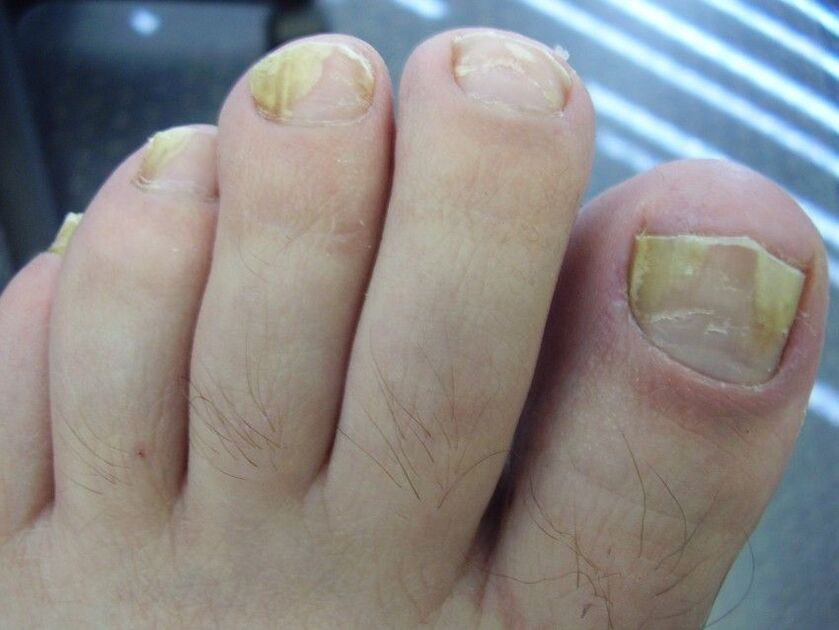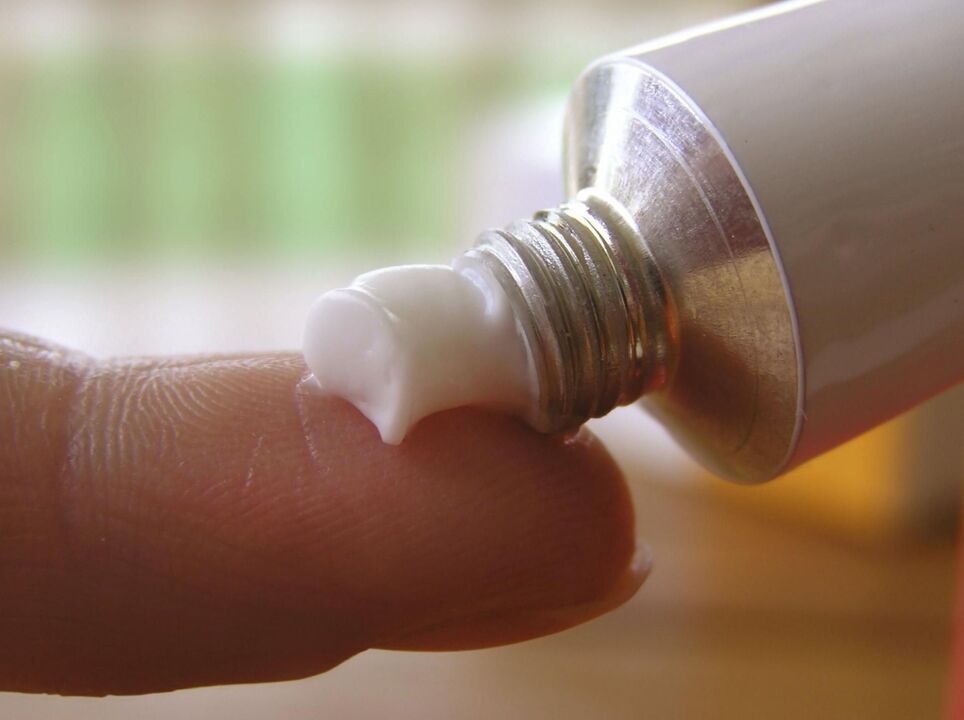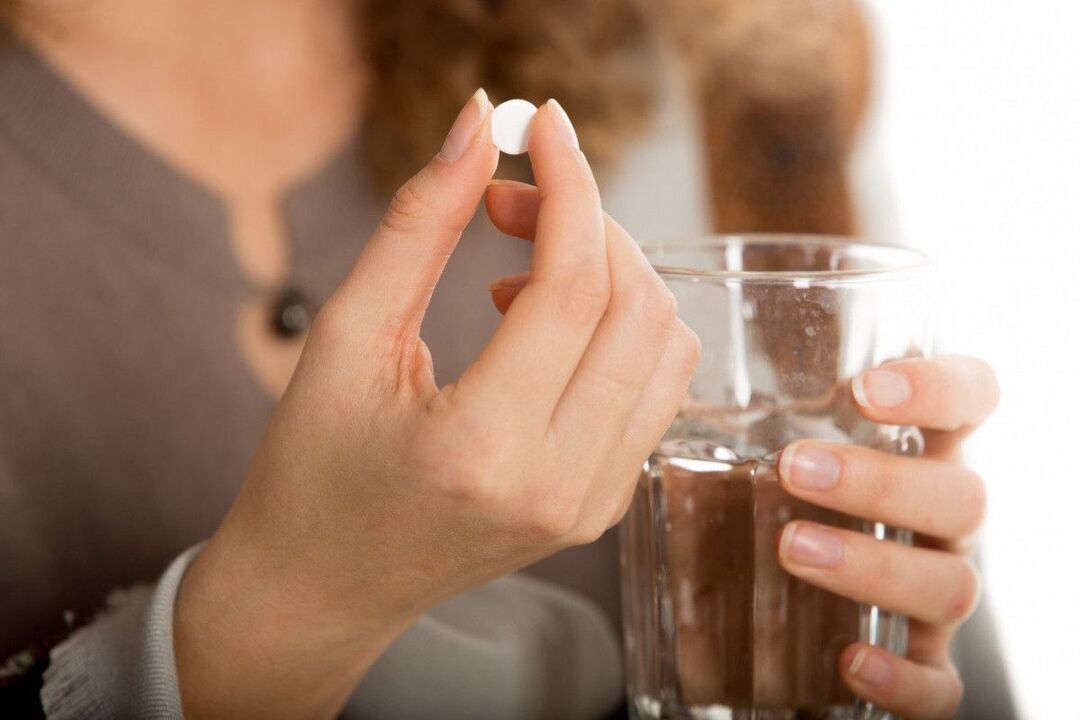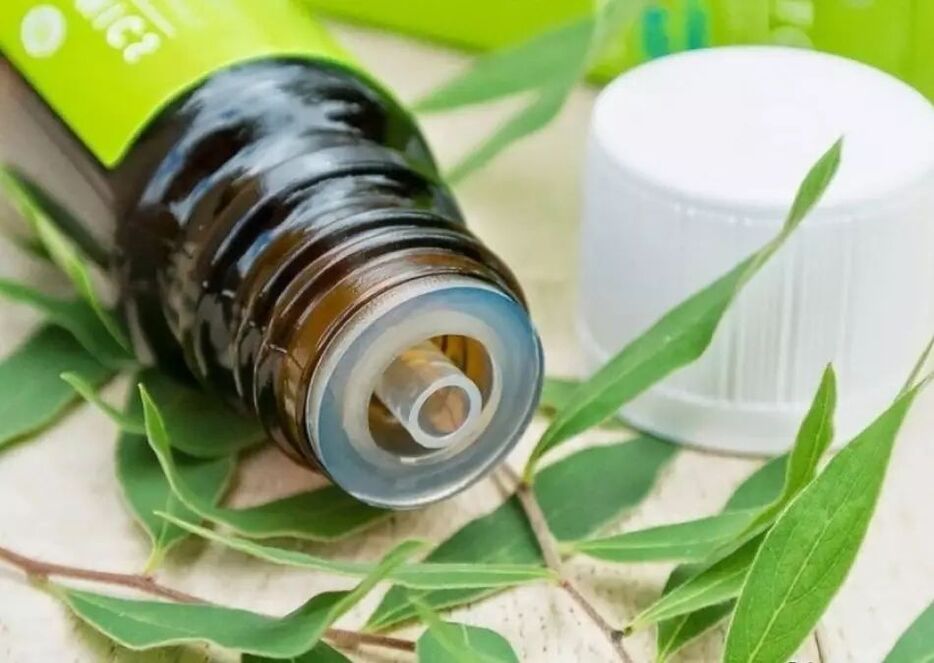Greetings dear readers. Nail fungus is one of the most common forms of mycotic damage to the body. This disease is quite unpleasant and it is not easy to recover from it. This disease should not be initiated, because this is not a cosmetic problem, but a serious pathology. But not everyone knows which approach will be right. It should be noted right away that self-medication is not the best option in this situation. But information about what the disease is and how to quickly get rid of nail fungus will not be superfluous for anyone.
What causes nail fungus infection
Nail fungus, or as it is called in medicine, onychomycosis, is a disease that causes damage to the nail plate and adjacent areas by parasitic fungal microorganisms. This is one of the subspecies of mycoses. If we consider all the diseases that only the feet can suffer from, onychomycosis is the most common.
You can catch the infection in public places where humidity is excessive. This includes baths, steam rooms, swimming pools, beaches.
Wooden objects (benches, deck chairs, etc. ) are widely used here. Due to the porosity of wood, fungi are difficult to kill there.

In addition, medical experts distinguish several risk groups. For people who belong to one of them, the possibility of infection increases dramatically.
- cancer patients undergoing chemotherapy;
- after a course of treatment with antibiotics or steroids;
It is not always possible to get rid of the disease quickly. The rate of recovery depends on the variety of parasites that cause it, the stage of disease development, the area of the lesion, the presence of complications and concomitant diseases, and the general condition of the body.
Symptoms of onychomycosis
Damage to the nails by parasitic fungi cannot be noticed. Symptomatic changes in the nail plate are quite noticeable and extend to the following.
- Natural shine is lost, transparency.
- The color changes. It can be yellowish, brownish, whitish, bluish, greenish, gray.
- Surface roughness is visible.
- Streaks, spots and thickenings are clearly distinguishable.
- Layers are observed.
- There is peeling from the nail bed.
- Different areas are painted and destroyed.
- The surrounding tissue may become red, swollen and itchy.
- There is a sensation of pain.
- Feet give off an unpleasant odor.

Despite all this, self-diagnosis can be difficult. At the beginning of development, the signs of onychomycosis are similar to the symptoms of some other lesions: trauma to the nail area.
How to quickly get rid of toenail fungus with medicines and folk remedies
You have to be realistic and understand that fungal infections of the nails and nails are not treated within a week. According to doctors, the healing period can last from 6-8 weeks to six months, and sometimes 8-12 months.
It depends on many factors, as well as on the activity of nail growth. In the hands, this process goes faster than in the legs, and therefore the cure here comes earlier.
The best and fastest positive results can be obtained if you follow the recommendations below.
- Use various therapeutic measures in the complex. Do not rely on the effectiveness of any one miracle drug. Efficiently combines pharmacological preparations and traditional medicine recipes.
- Treatment should be active, but gentle - aggressive agents, often used for therapeutic purposes, should not affect healthy parts of the body located close to the affected.
- Strictly adhere to hygiene requirements so that the fungus does not spread, as well as to avoid re-infection immediately after healing. And this possibility is very high.
- Note the dryness on the affected leg. Remember that moisture and heat are ideal conditions for the active reproduction of fungi.
- Eliminate all the causes that cause the appearance of onychomycosis and eliminate them.
- Every day, gently, but as much as possible, cut the growing edge of the nail that is affected by this disease. If possible, go through the laser exposure procedure, which is very effective in inhibiting the pathological activity of pathogens.
Pharmacological agents
Means acting against pathogens are usually divided into three subgroups depending on the active component. Each of them has in its arsenal both external ointments and tablets of general action on the whole body.

Keep in mind that the latter has an extensive list of side effects. Therefore, you can not prescribe medicine yourself. To minimize the risk, you need to undergo an examination, identify the type of fungus that causes the disease, and act with "targeting" drugs.
A subgroup of antimycotic drugs
- Azole agents. They are based on triazole or imidazole, as well as their derivatives. Depending on the concentration, they exhibit a fungistatic or fungicidal effect. They are effective in combating fungi such as mold and yeast.
- allylamine agent. The active ingredient can be terbinafine, naftifine, butenafine. They are able to stop the growth of fungi, and also have an anti-inflammatory effect.
- Other medicines. They act on the basis of flucytosine, morpholine, griseofulvin, chlornitrophenol additives. They are distinguished by a narrower activity aimed at specific types of fungal pathogens.
External meaning
At the beginning of the development of onychomycotic lesions, one only needs to use the help of ointment. Only if they prove to be ineffective, administration of antimycotic tablets is introduced.
Difference between cream and ointment:
- have a direct effect on the lesion;
- has few contraindications;
- Adverse reactions are limited.
If you catch the disease at the beginning of the development, then it will be possible to overcome it within a month.
The most popular antifungal creams and ointments
- Zinc ointment. Allows you to relieve inflammation, dry the affected area, relieve itching, get an absorption effect.
- Clotrimazole. Broad spectrum material. Duration of use - from 2 weeks to six months. It also has an antiseptic effect. Can cause skin dryness, burning, allergic manifestations on the skin. Contraindicated for pregnant women and nursing mothers, as well as children under the age of three.
- Nafifin. Fights inflammation, has an antimicrobial effect. Agents tend to accumulate on treated surfaces. Use the ointment no more than twice a day. This tool is not used during pregnancy and breastfeeding.

Use of tablets
To provide a systemic effect on the whole body, the doctor prescribes oral tablets. Broad spectrum drugs are prescribed.
- Ingredients fluconazole, medoflucon. It is enough to take it only once a day. Agents are well received. In rare cases, intestinal disorders and rashes on the body may occur. The course of treatment can be 1-4 weeks.
- Orungal material, sporanox. Can be used for pulse therapy. This drug is not prescribed for kidney failure, pregnancy, hypersensitivity to the action of the drug. May cause allergic reactions, dizziness, hypokalemia, stomach pain.
All medicines for nail fungus on the hands or feet should be taken only after consulting a doctor.
How to treat toenail fungus with folk remedies at home
First of all, you should strictly adhere to all medical recommendations, do not skip taking medication and bring treatment to the end, and do not interrupt the course after the elimination of disturbing symptoms.
In addition, you need:
- frequent use of local baths;
- use a special varnish that prevents the spread of fungi, and also has a therapeutic effect;
- daily remove the protruding part of the growing nail, which is affected by the disease;
- use a special way to soften the nail plate to remove it;
- steam hands or feet before applying external topical agents;
- take steps to prevent household infections.
Special lacquer
Lacquers have several advantages. The active substance penetrates deep into the affected nail, but at the same time it hardens and does not leave marks on clothes, sheets, shoes.
The hardened layer reliably blocks the oxygen supply to pathogens, which inhibits their activity. But varnish products are effective only in the early stages of onychomycosis.

Before using the varnish, you should use a warm local bath. Soaked plates affected by the fungus are cut to the maximum, treated with a file or other grinding tool. The surface is wiped dry
Lacquer is recommended to cover healthy nails as well. This procedure is repeated every evening for a long period of time - from several months to six months.
Help from a surgeon
Both parts and whole plates can be removed. But this is not a guarantee of complete relief from the disease. The possibility of further spread of fungal infection is very high.
After surgery, the finger heals for a long time. In addition, suppuration may develop. Newly grown nails may be deformed. A preferred alternative to such methods is laser therapy.
After the surgical removal of the damaged nail formation, special emphasis is placed on antifungal treatment. In some cases, especially severe ones, the growth zone can be removed, after which the finger will remain "bare" - the nail will not be able to grow here anymore.
Traditional medicine
Alternative methods are slower than medical methods, but have fewer side effects. They can be effective only for the treatment of the early stages of the development of the disease.
Then, folk recipes are used exclusively in combination with pharmacological preparations as an additional measure.
For the treatment of nail fungus, the drug is used.
- Garlic. Apply garlic gruel in the form of a smear on the painful nail. A fixing bandage is placed on top. Repeat the procedure every night. You can also use squeezed garlic juice in the same mixture with alcohol. Nails are treated with the resulting balm twice a day.
- Vinegar. Acetic acid acidifies the environment, which inactivates pathogens. This tool lubricates damaged nails every day. You can use a vinegar compress. To do this, a wad of cotton wool is soaked in vinegar and attached to the desired finger in the affected area. Compress hold all night, remove in the morning.
- peroxide. As with vinegar and other similar products, apply directly to the nail or a cotton swab. Peroxide acts as an antiseptic.
- Alcohol solution of iodine. They can cover the nail plate, including healthy ones, 1-2 times a day. In addition, iodine supplements are suitable for any bath. To do this, add a few drops of the product.
- Propolis colored. It can be used for lotions, as well as injected into local baths for hands or feet. The compress is left on the nail overnight. You can prepare an ointment, which is a mixture of propolis and butter. The composition is superimposed on gauze and placed on the desired area. The agent is left for 10 hours.
- Burn medicine from vegetables. For the treatment of onychomycosis, onions or horseradish are suitable. They have antimicrobial activity. Herbal products are used in the form of gruel. You can also make a sort of salve by mixing melted pomace with butter or chicken fat.
- Essential extracts. This fund has an anti-inflammatory, antimicrobial, regenerative effect. For the preparation of local baths or as part of a mixture for compresses, fir oil and some others can be used.

The essential extract is mixed with vaseline in a 1: 1 ratio. It should be applied to the damaged nail plate. As usual in such cases, the medicine will have a stronger effect if the nail is first steamed.
What is a fungal nail infection?
Fungal nail infectionalso known asdermatophytic onychomycosis. Early fungal infection of the feet is a common infection of the skin of the feet, especially between the toes. On the skin of the feet, the original fungus lives in the keratin that forms the outer layer of the skin. When the fungus spreads to the nail keratin,fungal nail infection.
What causes a yeast infection?
fungusspread from the legs (known as"dermatophyte fungus"), causes most fungal nail infections. Less commonly, nail infections are caused by other types of fungus, usually yeast (eg,Candida) andmould.
This fungus tends to attack damaged nails, because it is easier for the fungus to enter. Fungal infections of toenails are very common (1 in 4 people may be affected at any time), less common is toenail fungus. Both types are most common in older people, people with weakened immune systems, and people with diabetes and poor peripheral circulation. A warm, moist environment helps fungi grow and cause infection. Wearing tight shoes or using the shower, bathroom or dressing room can increase the risk of fungal infection.
Are they hereditary?
Absolutely not. However, in some very rare cases, there are genetic risk factors, and other family members may also be susceptible to the infection.
What are the signs of a fungal nail infection?
At first, there are usually no symptoms. Then, the nail may thicken and become painful when pressed against the inside of the shoe. Then they are difficult to prune. Seeing infected nails, especially toenails, can be embarrassing. Affected nails can ruin socks and tights, and they can also chafe the adjacent skin. Nearby skin may also have a fungal infection; it may itch, crack, blister, or appear whitish, especially between the toes.
What does a fungal nail infection look like?
Nail fungususually starts at its free edge and then spreads along the side of the nail to the base of the cuticle. Eventually, the entire nail may be affected. The infected area becomes white or yellowish, thickens and peels. Less commonly, there may be white inclusions on the nail surface. The nails on the big toe and little finger are most susceptible to damage by fungal infections. Sometimes, especially in those who often do wet work, such as housewives or cleaners, the skin around the nails becomes red and swollen. This is called paronychia and can allow infection to easily enter the nail.
How is a fungal nail infection diagnosed?
Fungal nail infectionusually diagnosed clinically. Your doctor may take a piece from the infected nail and send it to a lab to see if the fungus can be seen under a microscope or cultured. Sometimes a repeat sample may be required.
Many nail problems can only look likefungal infection, - for example, the changes seen in psoriasis after a bacterial infection or old injury, but antifungal pills will not help. Proper treatment may depend on knowing which fungus is causing the problem; it may take several weeks to get results.
Can a fungal nail infection be cured?
yes. However, to succeedtreatment of fungal nail infectionLong-term treatment is required, which can take up to a year. Fingernails are easier to handle.Fungal nail infectionusually recurring, especially in the toes.
How can a fungal nail infection be treated?
Fungal nail infectionby themselves are not troublesome, not all of them need treatment. Some people with infected toenails are not worried about them at all. In this case, they can sometimes be left alone (although the patient must still be careful and try not to spread the infection to other parts of the body and nails, as well as other people).
On the other hand, ifinfected nailscause embarrassment or discomfort, they are usually treated. It is important to treat people whose infections can cause serious health problems, such as diabetes or reduced immunity, to prevent potentially serious health problems.
The goal of treatment is to eliminate the fungus: then the nail usually returns to normal. However, if the nail is damaged before it becomes infected, it will be more difficult to clean and may return to its original state.Nail infectioncaused by mold and yeast can be very resistant to treatment.
Treatment options include:
Treatment applied to the nail (local procedure)
Treatments applied to the nail do not work as well as oral treatments. They are most effective if the infection is at an early stage. The most commonly used methods are nail polishes based on amorolfine, ciclopirox, and thioconazole solutions.
They may not be able to clean the inside of the infected nail on their own, but regularly removing the damaged part of the nail with scissors or scraping can help. Medicines taken by mouth, used in combination with antifungal agents, increase the chance of recovery. They may need to be used for 4-12 months before effects are noticed.
Fornail infectionshorter course of treatment. The cure rate with local treatment alone is about 15-30%. Topical treatment is safe. Redness and irritation may occur.
Before starting to take pills, the doctor must send part of the nail to the laboratory to check if the diagnosis of fungal infection is confirmed.
Materials available for use in the treatment of fungal nail infections include:
- The substance griseofulvin has been used for many years and is the only one of the three drugs licensed for use in children. It is only fully absorbed with fatty foods (such as milk and dairy products) and a long course of treatment is usually required (6 to 9 months for nails and up to 18 months for toenails). However, only about three-quarters of infected nails and one-third of infected toenails are cleared. Frequent relapses are also possible.
- Terbinafine and itraconazole have now largely moved away from griseofulvin. They work better and faster, although only about 50% of nail infections are cured. Terbinafine should be considered as a first-line treatment for dermatophyte fungi (ie, those affecting the feet). It is taken daily for 6 weeks for fingernail infections and for 12-16 weeks for foot infections.
- The substance itraconazole is effective in the treatment of dermatophytes; it is also useful for treating other fungi such as yeast. It is usually taken for a period - for one week every month - because it is absorbed into the cuticle of the nail and continues to act for several weeks. Two weekly courses given over 21 days are usually sufficient for nail infections and three for toe infections.
- The ingredient fluconazole may be effective for Candida fungal infections. It is not currently licensed for fungal nail infections. It appears to be less effective than itraconazole and terbinafine, but remains an alternative for intolerance to both drugs.
- Other procedures
Laser and photodynamic therapy may help but are less effective than the topical and systemic treatments listed above.
Herbal products are also promoted fortreatment of fungal nail infection, but there is no conclusive evidence that it is safer or more effective than standard treatments.
Are there any side effects from the treatment?
Oral treatments are more likely to cause side effects than topical treatments.
Terbinafine sometimes causes potentially very severe allergic reactions, can slightly worsen skin conditions, and sometimes affects the taste buds.
Itraconazole is not indicated for people who are already taking certain medications. Your doctor will tell you about this. Both terbinafine and itraconazole can affect the liver, and your doctor may order blood tests to check this before and during treatment.
Although griseofulvin is the only drug licensed in children, many dermatologists prefer to use terbinafine because it is more effective.
How do I know if the treatment is working?
The new nail will grow slowly from the base, and it may take 6 months to a year after treatment ends for the nail to look normal again. Foot infections are cleared faster and more completely than toenails; it may take 18 months for the leg to fully recover.
Surgical removal of nails
Sometimes very thick nails that do not respond to pills alone can be removed by a surgeon under local anesthesia, but this is rarely done because the success rate of treatment does not allow surgery.
Personal care
- Keep nails short, dry and clean. Use one clipper for infected nails and another for normal nails.
- Don't just treat your nails; use an antifungal cream to treat the skin of the feet.
- Avoid trimming the cuticles, either by yourself or by a manicurist, as this increases the risk of nail damage and infection.
For fungal infections of the toes:
- Wear comfortable, well-fitting shoes without high heels or tight socks.
- Keep your feet dry, wear cotton socks and change them daily, and use breathable shoes. Regular washing in hot water cleans most soiled socks, but it can be made more effective by using an antifungal spray before washing. Other clothing should generally not be contaminated.
- Maintain foot hygiene, including treating any infections.
- Wear clean bathing shoes when sharing a shower.
- Be especially careful about the hygiene of the affected feet.
- Consider getting help from a podiatrist if thickened toenails make walking uncomfortable.
Preventive measures
The risk of re-infection of the fungus after getting rid of the disease is very high. Therefore, you need to clearly follow the simple rules:
- follow foot hygiene;
- discard shoes, towels and socks used during treatment;
- avoid sharing such things with other family members;
- avoid excessive foot moisture, use talcum powder;
- treat the inner surface of the shoe with an antiseptic.

Do not forget, all medicines for nail fungus, take after consulting a doctor.
















